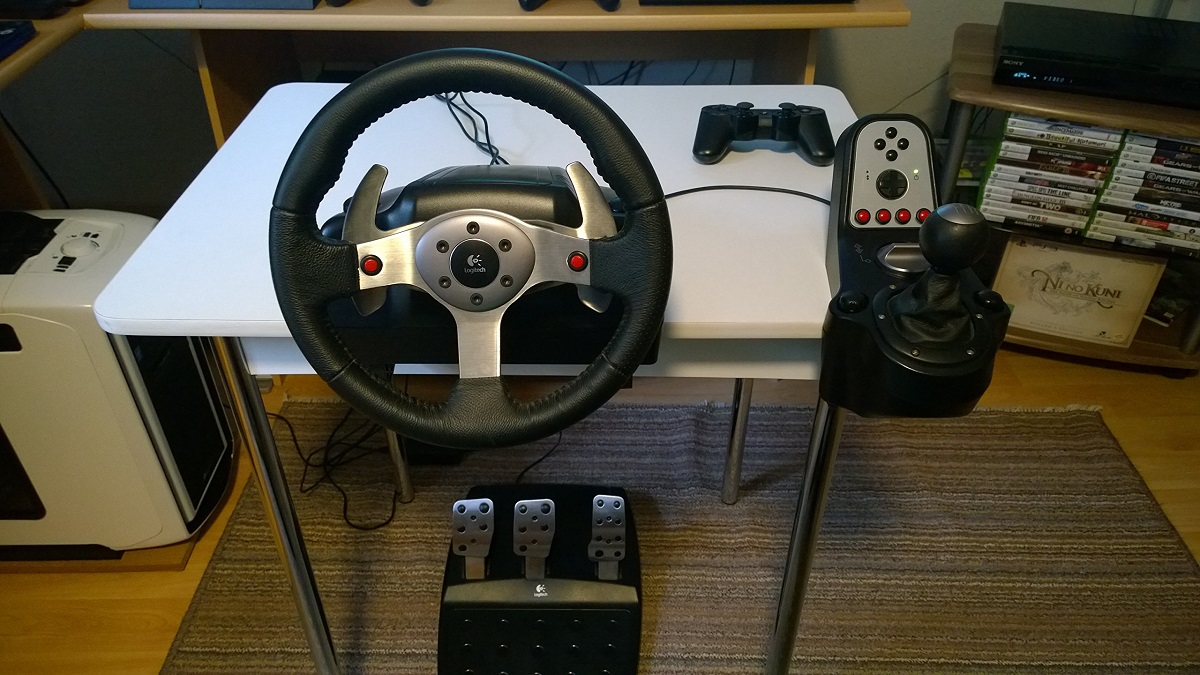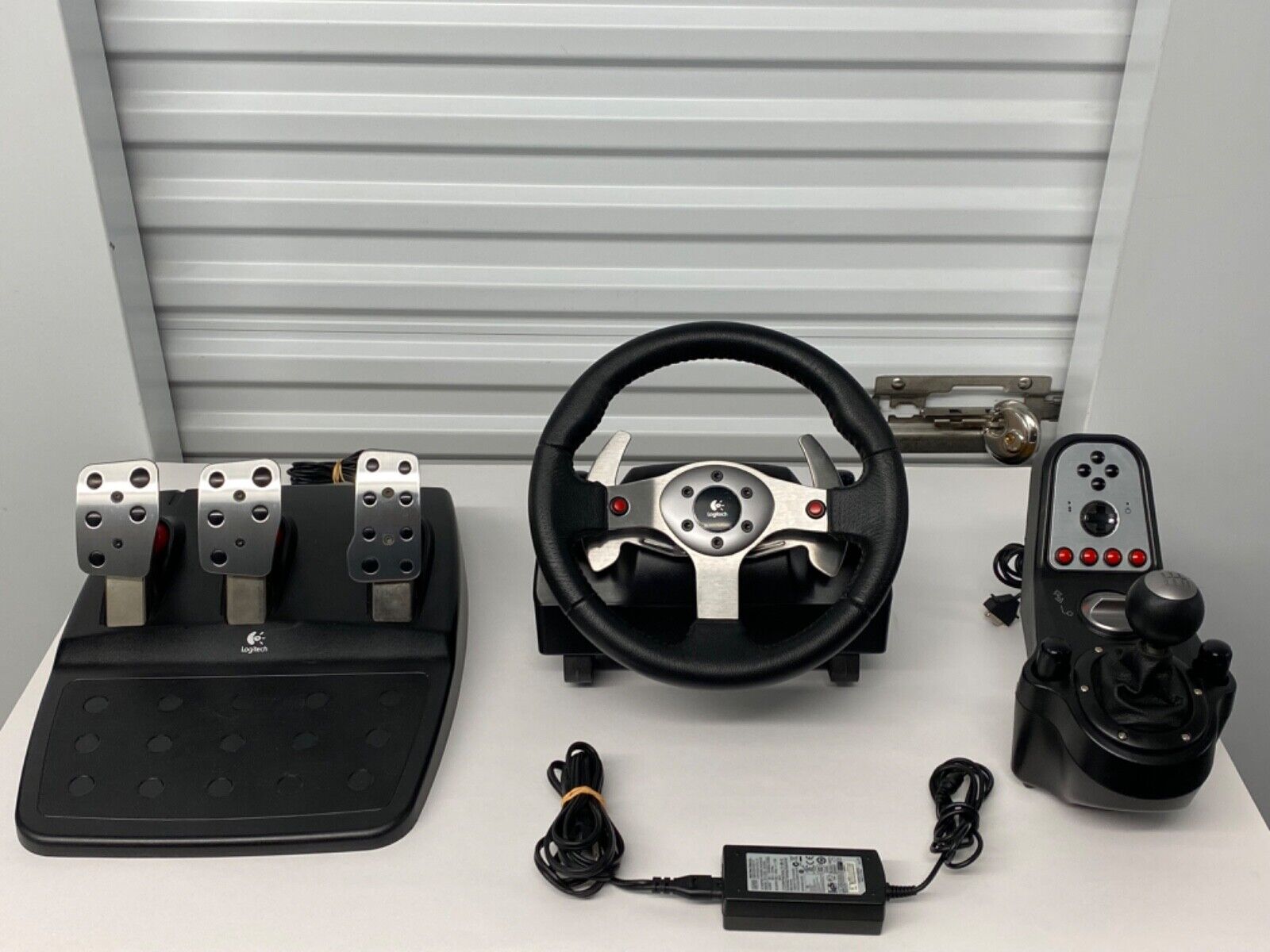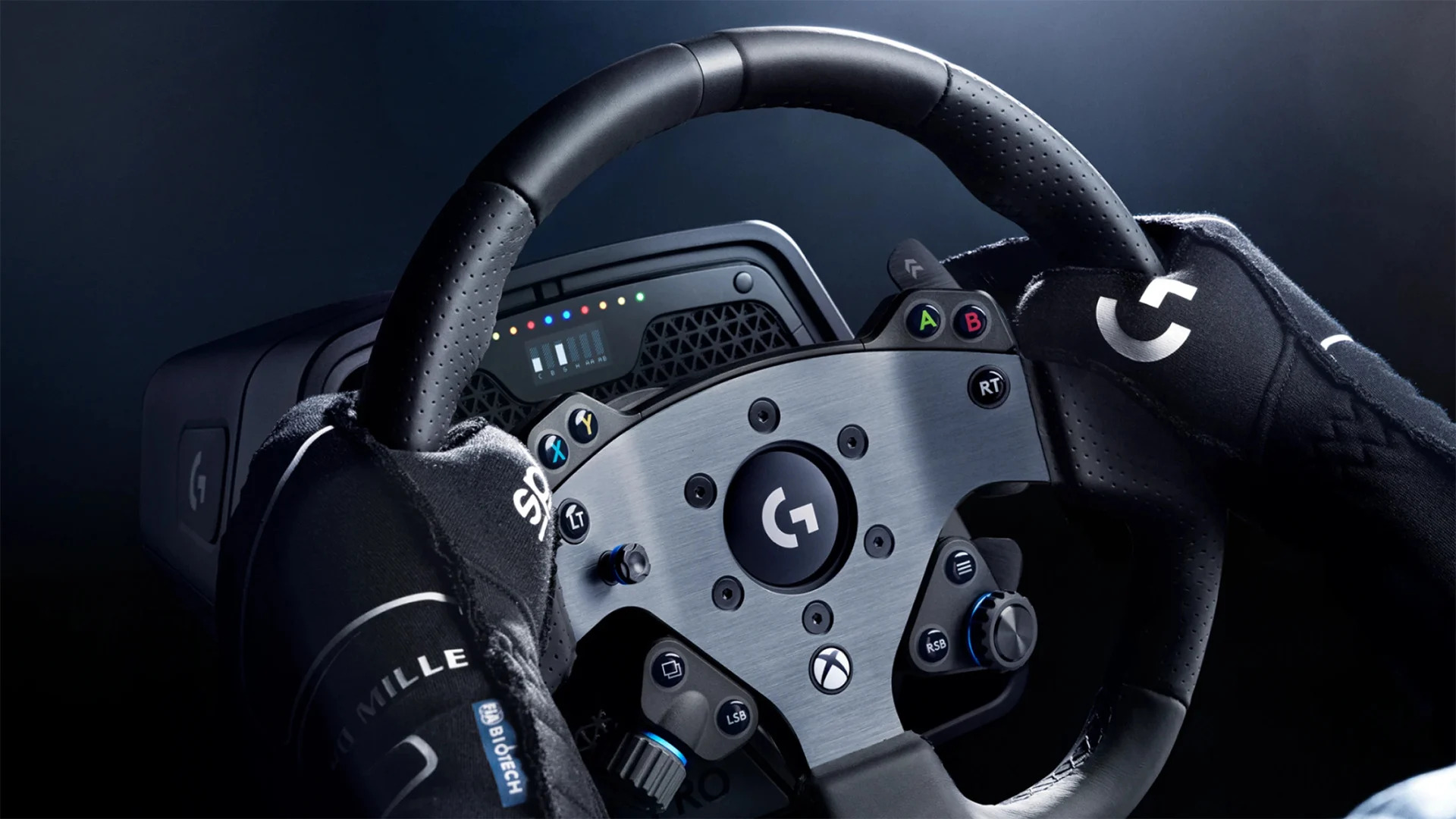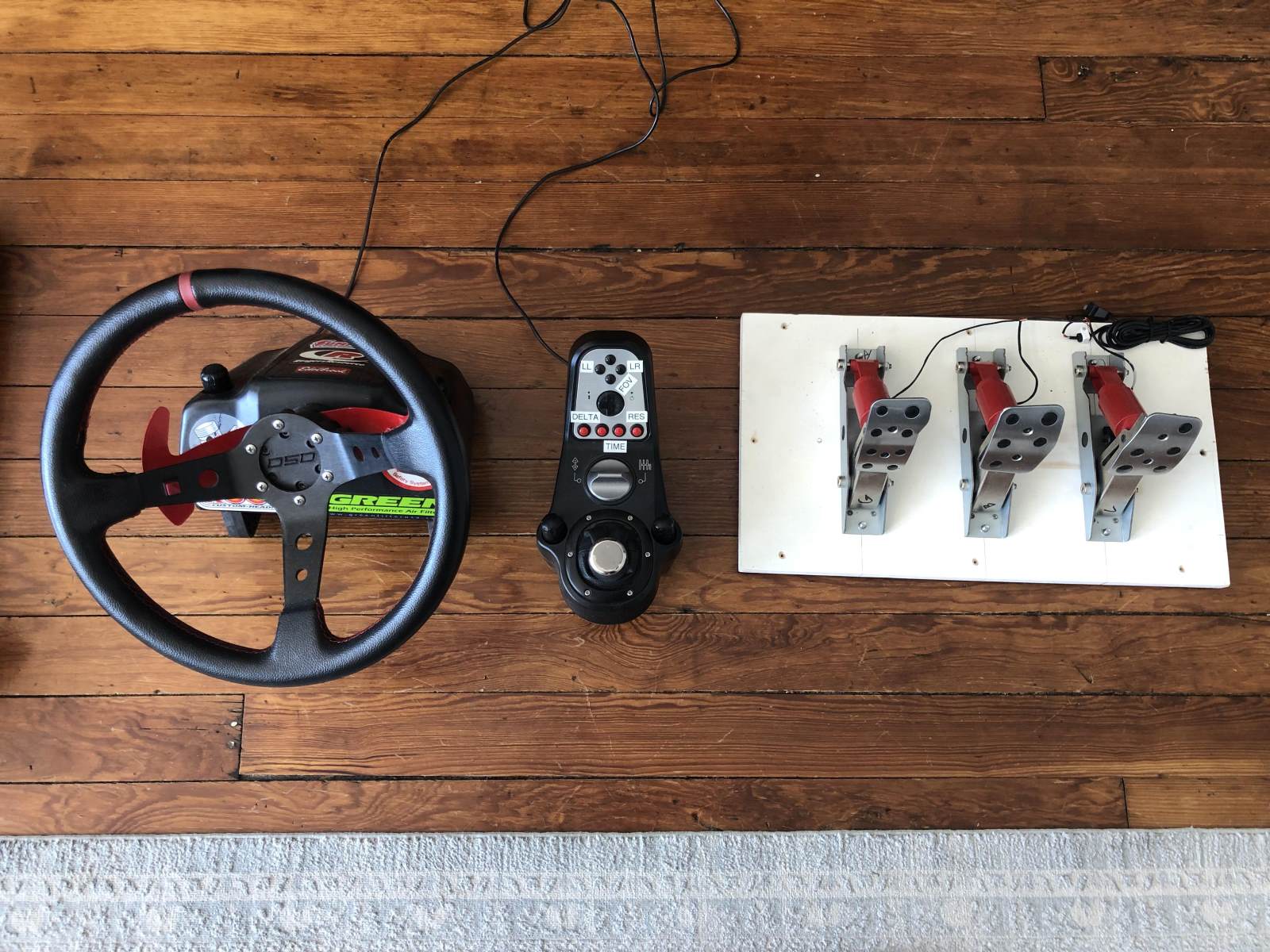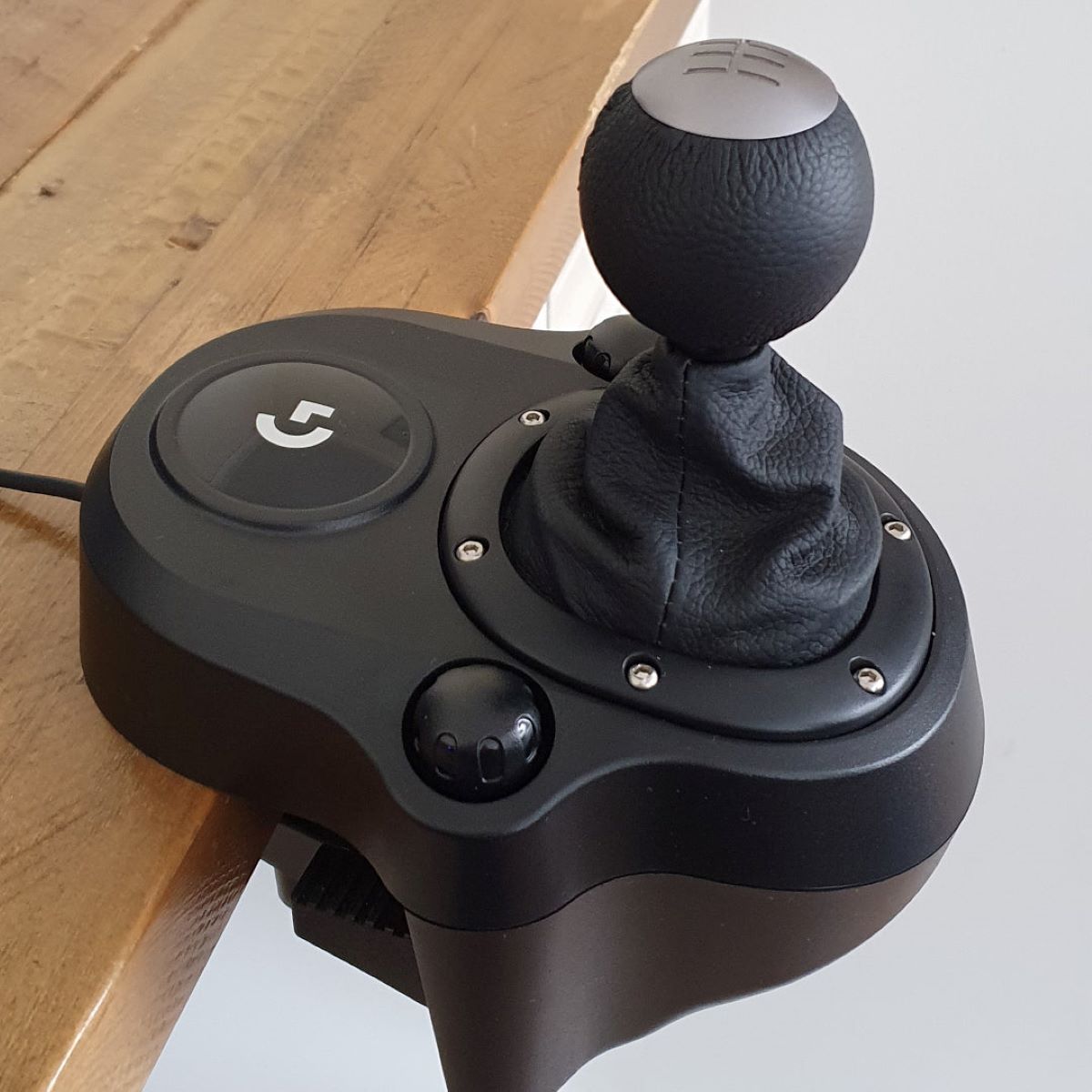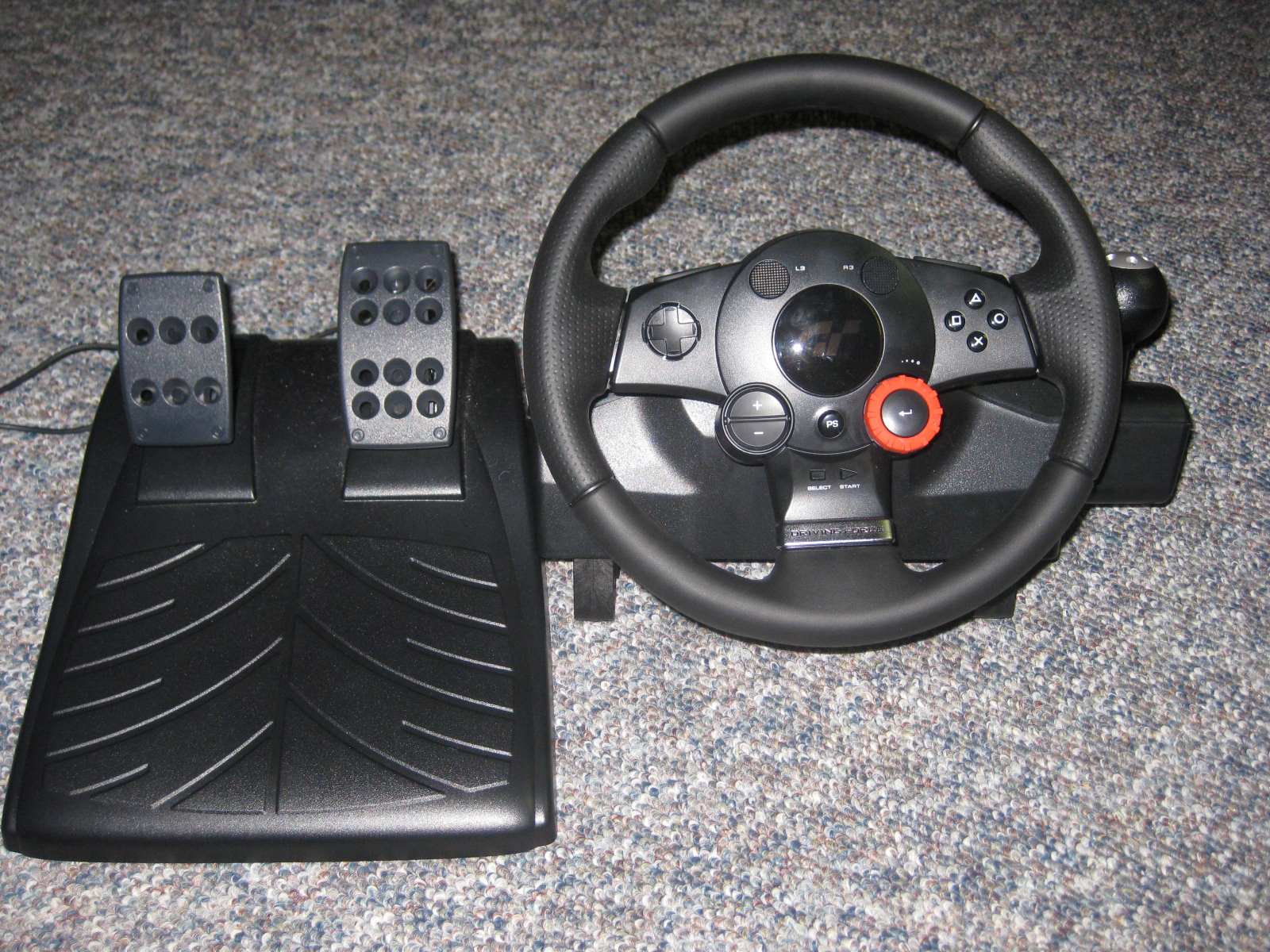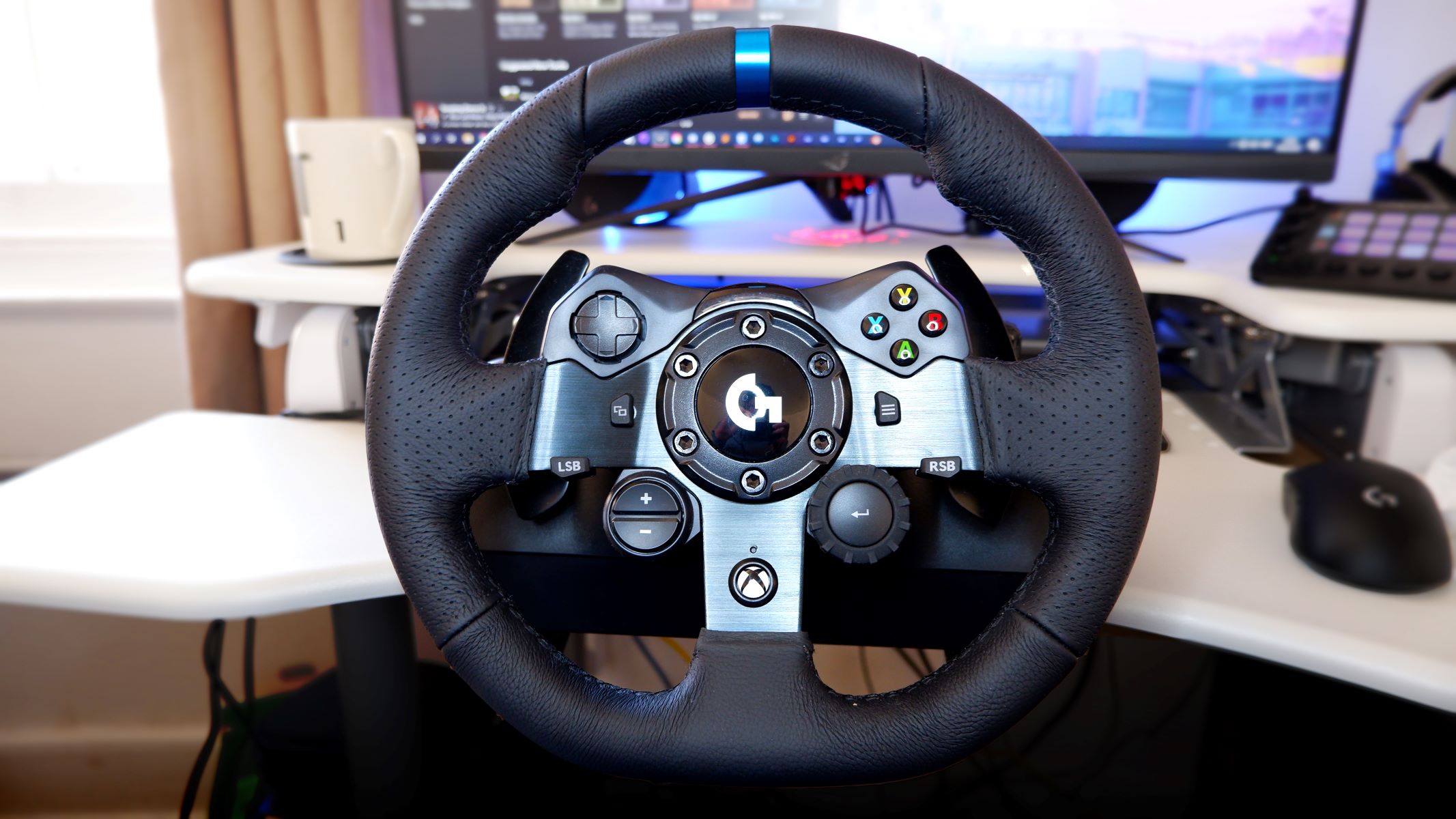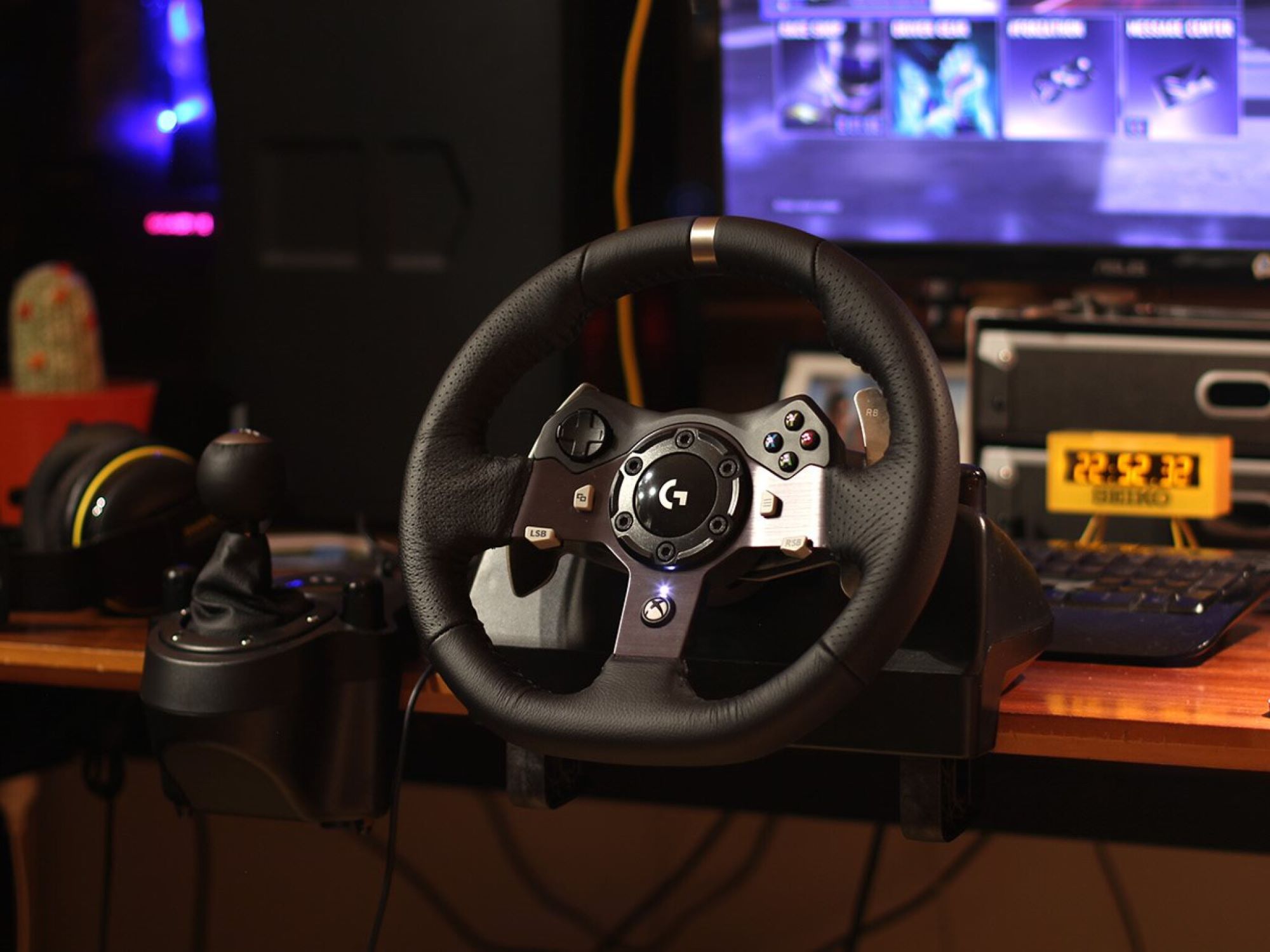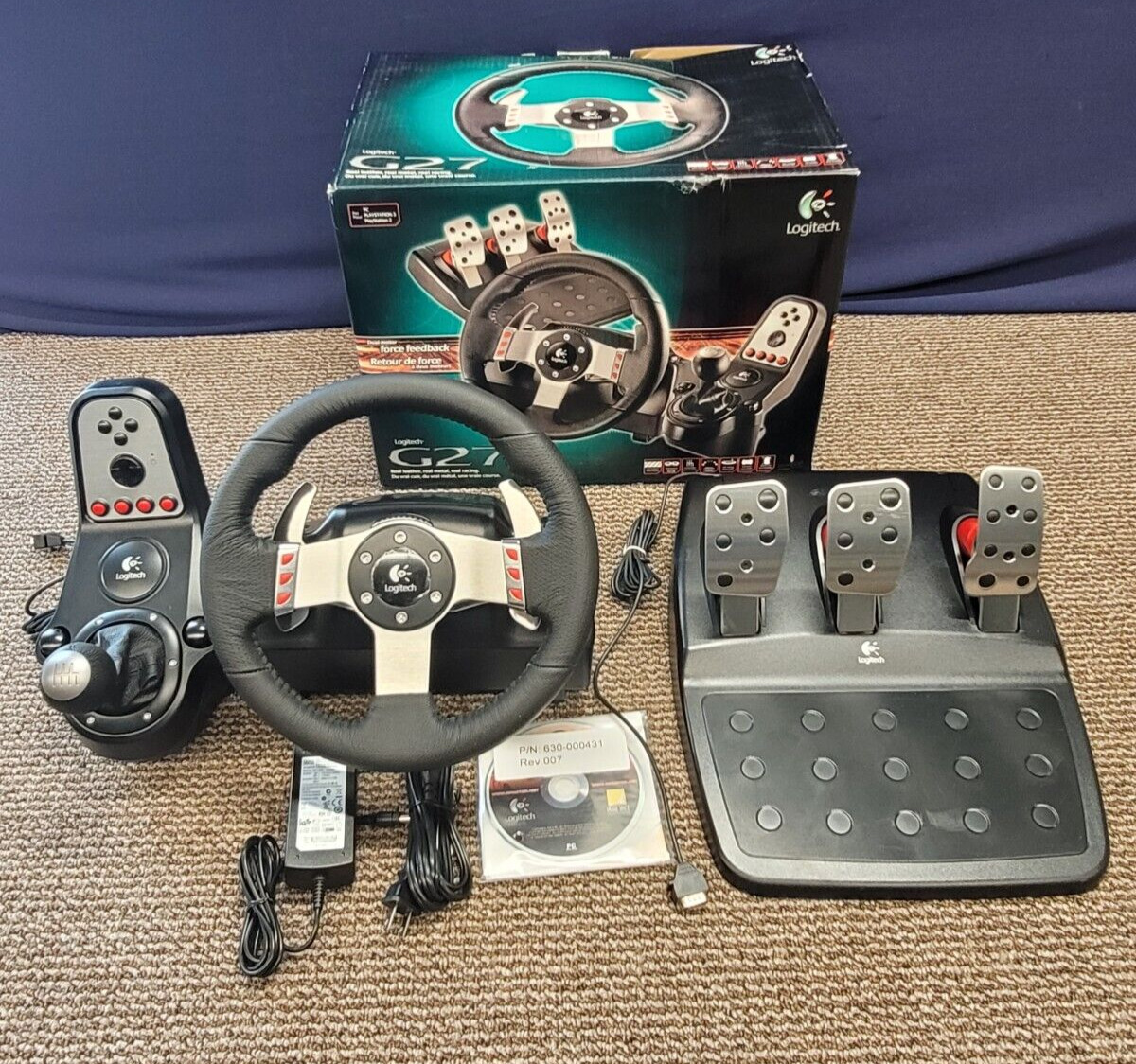Introduction
So, you've just purchased the Logitech G25 Racing Wheel and you're eager to experience the thrill of racing in Grid 2. The Logitech G25 is renowned for its realistic force feedback, precise control, and immersive driving experience. By setting up this impressive racing wheel with Grid 2, you can take your virtual racing adventures to the next level. This guide will walk you through the process of installing the G25 Racing Wheel, configuring Grid 2 settings, calibrating the wheel, and testing the setup to ensure everything is functioning as it should.
Whether you're a seasoned racing enthusiast or a newcomer to the world of virtual racing, the Logitech G25 Racing Wheel paired with Grid 2 offers an unparalleled opportunity to immerse yourself in the adrenaline-pumping world of high-speed, high-stakes racing. With its responsive pedals, authentic gear shift, and precise steering wheel, the G25 Racing Wheel delivers a level of realism that will make you feel like you're actually behind the wheel of a high-performance race car.
By following the steps outlined in this guide, you'll be able to harness the full potential of the G25 Racing Wheel and Grid 2, allowing you to fine-tune the settings to match your preferences and maximize your enjoyment of the game. So, buckle up and get ready to dive into the exciting world of virtual racing as we embark on the journey to set up your G25 Racing Wheel with Grid 2.
Installing the G25 Racing Wheel
Before you can start racing in Grid 2 with the Logitech G25 Racing Wheel, you need to ensure that the wheel is properly installed and connected to your gaming setup. Here’s a step-by-step guide to help you get your G25 Racing Wheel up and running:
- Unboxing and Inspection: Carefully unbox your G25 Racing Wheel and inspect all the components to ensure that everything is included and undamaged. The wheel should include the steering wheel unit, pedals, and power supply.
- Connecting the Pedals: Connect the pedal unit to the steering wheel unit using the provided cable. Ensure that the connection is secure to prevent any issues during gameplay.
- Connecting to Power: Plug the power supply into a power outlet and connect the other end to the steering wheel unit. This will provide the necessary power for the G25 Racing Wheel to function.
- Connecting to Your PC or Console: Depending on your gaming setup, connect the G25 Racing Wheel to your PC or gaming console using the appropriate cables. For PC users, the G25 Racing Wheel typically connects via USB, while console users may need to use a compatible adapter or cable.
- Installing Drivers: If you’re using the G25 Racing Wheel with a PC, you may need to install the appropriate drivers to ensure that the wheel is recognized by your computer. Logitech’s official website usually provides the necessary drivers for download.
- Securing the Wheel: Position the G25 Racing Wheel on a stable surface and secure it in place to prevent any movement during intense racing sessions. A dedicated racing wheel stand or a sturdy desk can provide the stability needed for an immersive racing experience.
Once you’ve completed these steps, your Logitech G25 Racing Wheel should be successfully installed and ready to be configured for use with Grid 2. With the physical setup complete, it’s time to move on to the next phase of the process: configuring the settings within Grid 2 to optimize the experience with your new racing wheel.
Configuring Grid 2 Settings
Now that your Logitech G25 Racing Wheel is installed and ready for action, it’s essential to configure the in-game settings in Grid 2 to ensure seamless compatibility with the wheel. Here’s a comprehensive guide to help you optimize the game settings for an immersive racing experience:
- Accessing the Options Menu: Launch Grid 2 and navigate to the options or settings menu within the game. Look for the section related to input devices or controllers.
- Selecting the G25 Racing Wheel: Once in the input settings, locate the option to choose the input device. Select the Logitech G25 Racing Wheel from the list of available controllers. This step ensures that the game recognizes and responds to input from the G25 Racing Wheel.
- Mapping Controls: Grid 2 offers the flexibility to map specific functions to different components of the G25 Racing Wheel. Assign steering, acceleration, braking, shifting, and additional functions to correspond with the respective components of the wheel and pedals. This customization allows you to tailor the controls to your preferred driving style.
- Adjusting Force Feedback Settings: Fine-tune the force feedback settings to achieve the desired level of realism and responsiveness. Experiment with the force feedback strength, wheel rotation sensitivity, and other related parameters to find the optimal configuration that enhances the immersive experience without compromising control.
- Testing the Configuration: After mapping the controls and adjusting the force feedback settings, perform a test drive within Grid 2 to ensure that the G25 Racing Wheel functions as intended. Pay attention to the responsiveness of the wheel, pedals, and force feedback effects to verify that the configuration aligns with your preferences.
By meticulously configuring the settings within Grid 2 to accommodate the Logitech G25 Racing Wheel, you can unlock the full potential of the wheel’s features and immerse yourself in the thrilling world of virtual racing. With the settings optimized, you’re now ready to fine-tune the wheel’s calibration to ensure precise and accurate input during gameplay.
Calibrating the G25 Racing Wheel
Calibrating the Logitech G25 Racing Wheel is a crucial step to ensure that the wheel’s inputs are accurately translated within Grid 2, providing a seamless and responsive driving experience. Follow these steps to calibrate the G25 Racing Wheel for optimal performance:
- Accessing Calibration Options: Navigate to the calibration or settings menu within Grid 2 to access the options for calibrating input devices. Look for the section specifically dedicated to steering wheels or controllers.
- Wheel Centering: Begin the calibration process by ensuring that the wheel is centered. This step establishes the neutral position for the steering wheel, allowing the game to recognize the full range of motion accurately.
- Steering Range Adjustment: Adjust the steering range to match the physical capabilities of the G25 Racing Wheel. This setting determines the degree of rotation required to achieve maximum steering input within the game. Aligning the in-game steering range with the wheel’s physical capabilities enhances precision and realism during gameplay.
- Pedal Calibration: If the game offers the option to calibrate pedals individually, follow the on-screen instructions to ensure that the pedal inputs are accurately recognized. Calibration helps optimize the responsiveness of the accelerator, brake, and clutch pedals, allowing for precise control over vehicle acceleration and deceleration.
- Force Feedback Tuning: Fine-tune the force feedback settings within the calibration menu to achieve the desired level of feedback strength and responsiveness. Adjust force feedback parameters to match your preference for realistic tactile feedback while navigating the intense racing environments in Grid 2.
By meticulously calibrating the Logitech G25 Racing Wheel within Grid 2, you can fine-tune the wheel’s responsiveness and ensure that it accurately translates your inputs into the virtual racing experience. Once the calibration process is complete, it’s time to put the setup to the test and experience the exhilaration of high-speed racing with the G25 Racing Wheel at the helm.
Testing the Setup
With the Logitech G25 Racing Wheel installed, Grid 2 settings configured, and the wheel calibrated, it’s time to put the entire setup to the test. Testing the setup involves engaging in a test drive within Grid 2 to ensure that the G25 Racing Wheel delivers the immersive and responsive racing experience it’s renowned for. Here’s how to approach the testing phase:
- Selecting a Race: Choose a race or driving scenario within Grid 2 that allows you to experience a variety of driving conditions, including straightaways, sharp turns, and diverse road surfaces. This selection provides an opportunity to evaluate the wheel’s performance across different in-game environments.
- Assessing Steering Responsiveness: During the test drive, pay close attention to the responsiveness of the steering wheel. Evaluate how the G25 Racing Wheel accurately replicates your steering inputs within the game, providing precise control and a realistic driving sensation.
- Testing Force Feedback Effects: Experience the force feedback effects as you navigate through the virtual racecourse. Assess the wheel’s ability to convey tactile feedback, such as road texture, vehicle traction, and simulated forces encountered during high-speed maneuvers.
- Evaluating Pedal Control: Utilize the accelerator, brake, and clutch pedals to gauge their responsiveness and precision. Verify that the calibration adjustments result in accurate and intuitive pedal control, allowing for seamless acceleration, braking, and gear shifting.
- Adjusting Settings if Needed: If you encounter any discrepancies or feel that certain aspects of the setup require further adjustment, return to the settings menu within Grid 2 to fine-tune the configurations based on your testing experience. Iteratively adjusting the settings can help tailor the setup to your specific preferences.
By thoroughly testing the Logitech G25 Racing Wheel setup within Grid 2, you can ensure that the wheel delivers an immersive, responsive, and thrilling racing experience. The testing phase allows you to fine-tune the setup based on real-world performance, ultimately maximizing your enjoyment of virtual racing with the G25 Racing Wheel at the helm.







